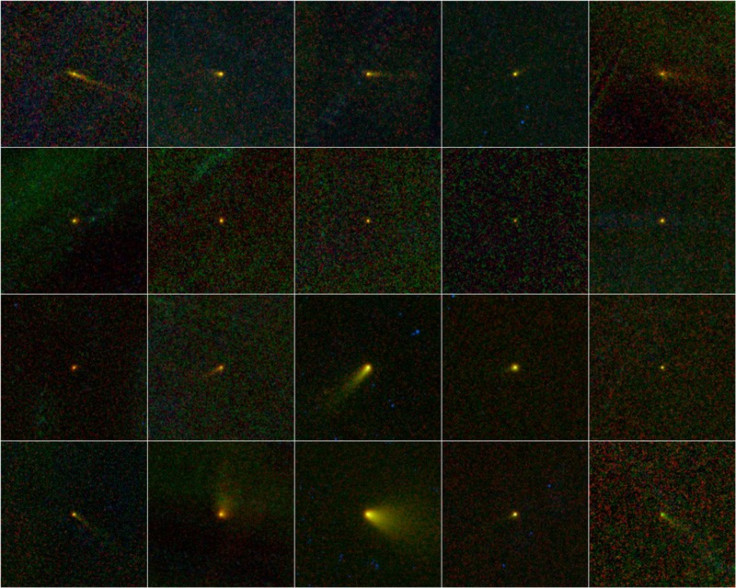NASA Mission Discovers New Asteroids, Comets

NASA said its Near-Earth Object WISE (NEOWISE) mission has discovered 20 comets and more than 33,000 asteroids in the main belt between Mars and Jupiter, in addition to 134 near-Earth objects (NEOs).
NEOs are asteroids and comets with orbits that come within 28 million miles of Earth's path around the sun. A comet is an icy small Solar System body that when close enough to the Sun displays a visible coma - a thin, fuzzy, temporary atmosphere - and sometimes also a tail. Asteroids are actually small solar system bodies orbiting around the sun.
NASA's NEOWISE is an enhancement of the $320 million Wide-field Infrared Survey Explorer (WISE) mission that was launched in Dec. 2009. WISE scanned the entire celestial sky in infrared light about 1.5 times and captured more than 2.7 million images of objects in space, ranging from faraway galaxies to asteroids and comets close to Earth.
The latest findings is expectd to help in determining the objects' sizes and compositions and will lead to a much-improved picture of the various asteroid populations.
NASA said by combining visible and infrared measurements, astronomers can study the compositions of the rocky bodies like whether they are solid or crumbly.
NEOWISE data will help in the discovery of the closest dim stars, called brown dwarfs. These observations have the potential to reveal a brown dwarf even closer to us than our closest known star, Proxima Centauri, if such an object does exist.
Data from WISE and NEOWISE could also detect a hidden gas-giant planet in the outer reaches of our solar system, says NASA.
Even just one year of observations from the NEOWISE project has significantly increased our catalog of data on NEOs and the other small bodies of the solar systems, said Lindley Johnson, NASA's program executive for the NEO Observation Program.
NEOWISE confirmed the presence of objects in the main belt that already had been detected. In just one year, it observed about 153,000 rocky bodies out of about 500,000 known objects. Those include the 33,000 that NEOWISE discovered.
NEOWISE also observed known objects closer to and farther from us than the main belt, including roughly 2,000 asteroids that orbit along with Jupiter, hundreds of NEOs and of course, more than 100 comets.
You can think of Earth and the asteroids as racehorses moving along in a track, said Amy Mainzer, the principal investigator of NEOWISE at NASA's Jet Propulsion Laboratory in Pasadena, California. We're moving along together around the sun, but the main belt asteroids are like horses on the outer part of the track. They take longer to orbit than us, so we eventually lap them.
The data from NEOWISE on the asteroid and comet orbits are catalogued at the International Astronomical Union's Minor Planet Center, a clearinghouse for information about all solar system bodies at the Smithsonian Astrophysical Observatory in Cambridge, Massachusetts.
The science team is analyzing the infrared observations now and will publish new findings in the coming months.
WISE is a NASA infrared-wavelength astronomical space telescope launched on 14 Dec. 2009. In early October 2010, after completing its prime science mission, the spacecraft ran out of frozen coolant that keeps its instrumentation cold.Rather than abandoning the spacecraft, the NASA Planetary division stepped in with a $400,000 one month program extension called 'Near-Earth Object WISE' (NEOWISE) to search for small solar system bodies close to Earth's orbit.
As the NEOWISE has successfully completed a full sweep of the main asteroid belt, the WISE spacecraft will go into hibernation mode and remain in polar orbit around the Earth, where it could be called back into service in the future.
The first batch of observations from the WISE mission will be available to the public and astronomy community in April.
© Copyright IBTimes 2024. All rights reserved.





















